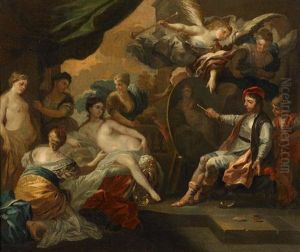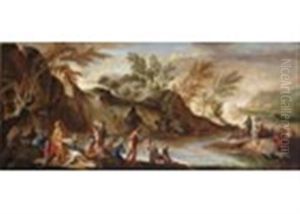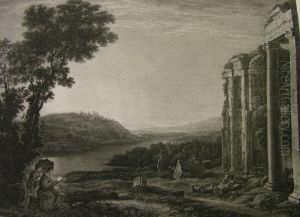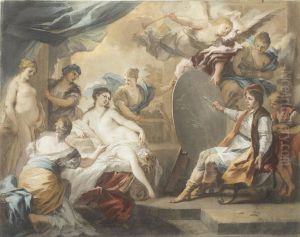Joseph Goupy Paintings
Joseph Goupy was a British artist of French descent, known primarily for his work as a painter and engraver. Born in 1689, Goupy's life and career were deeply influenced by the cultural and artistic exchanges between Britain and France during the 18th century. He came from a family of artists, which likely provided him with an early exposure to the arts and an education in various artistic techniques.
Goupy's career took a significant turn when he became associated with the British royal court, particularly through his connections with Frederick, Prince of Wales, and other notable figures of the time. This association not only elevated his status as an artist but also allowed him to receive commissions that would become some of his most celebrated works. His style was characterized by a combination of the Rococo's lightness and charm with a distinct attention to detail, which was highly admired by his contemporaries.
Apart from his paintings, Goupy was also known for his skill in engraving and watercolor. He was particularly adept at creating caricatures, which became popular among the British aristocracy. These works often displayed a sharp wit and a keen sense of observation, making Goupy a sought-after artist for those wishing to commission personal or political satires.
Despite his success, Joseph Goupy's life was not without controversy. His relationship with George Frideric Handel, the famous composer, soured after Goupy created a caricature of Handel that depicted him as greedy and gluttonous. This incident reflects the sometimes precarious position of artists who relied on patronage yet sought to maintain their artistic integrity and personal views.
Joseph Goupy passed away in 1769, leaving behind a diverse body of work that includes portraits, landscapes, and satirical pieces. His contributions to the British art scene of the 18th century are remembered for their elegance, wit, and the unique blend of cultural influences that he managed to encapsulate in his works. Goupy's legacy is a testament to the vibrant cross-cultural artistic exchanges of his time, and his works continue to be studied and appreciated for their historical significance and artistic merit.




















